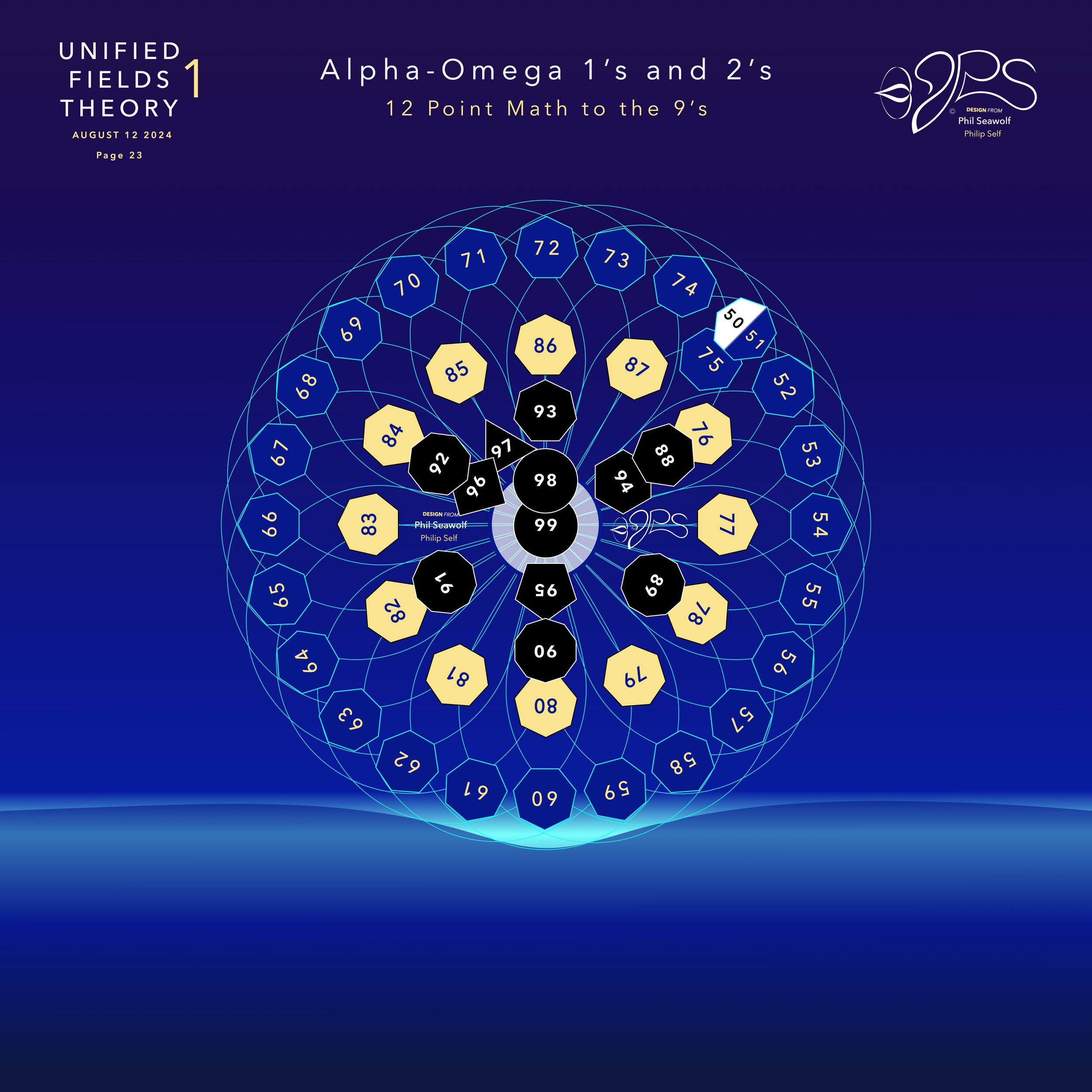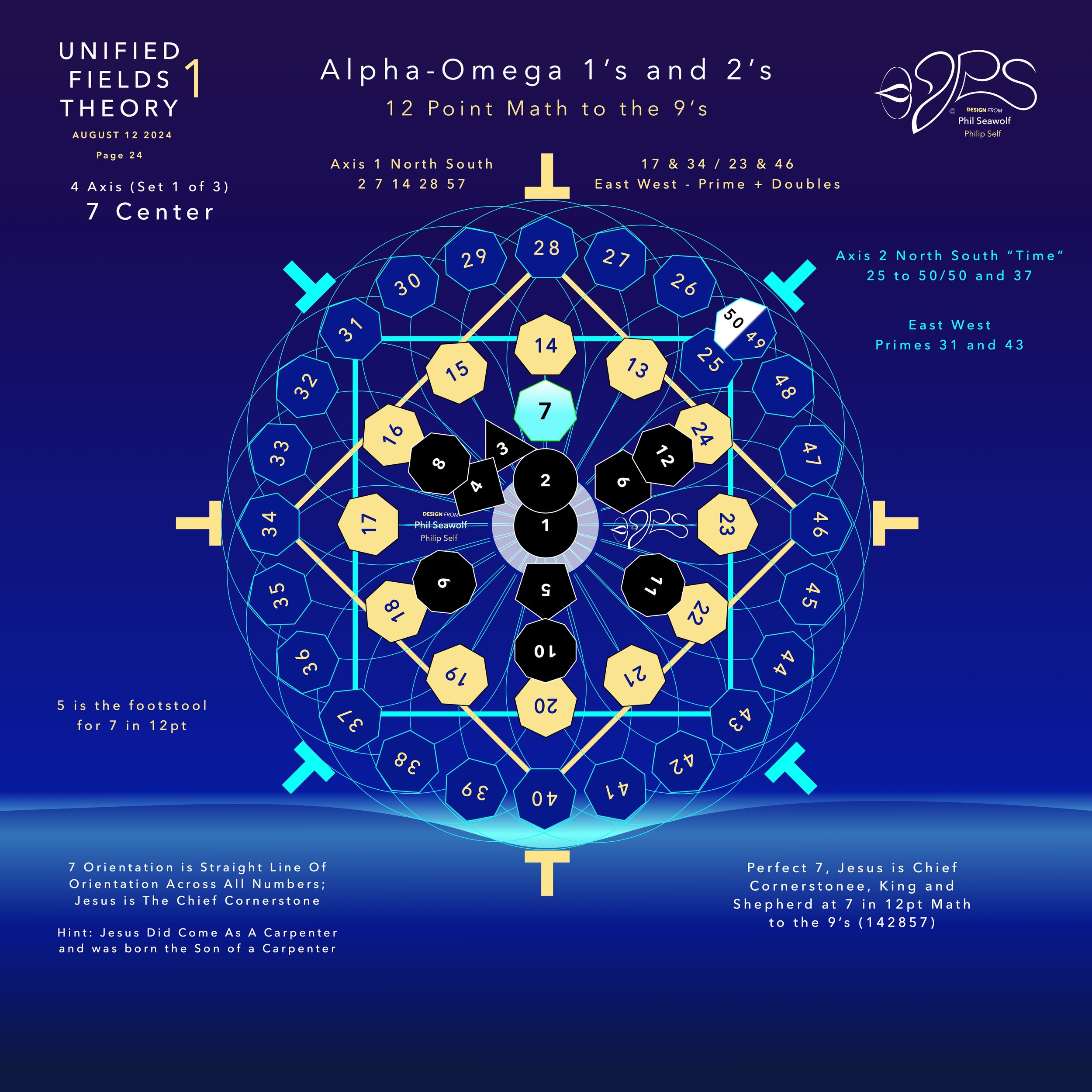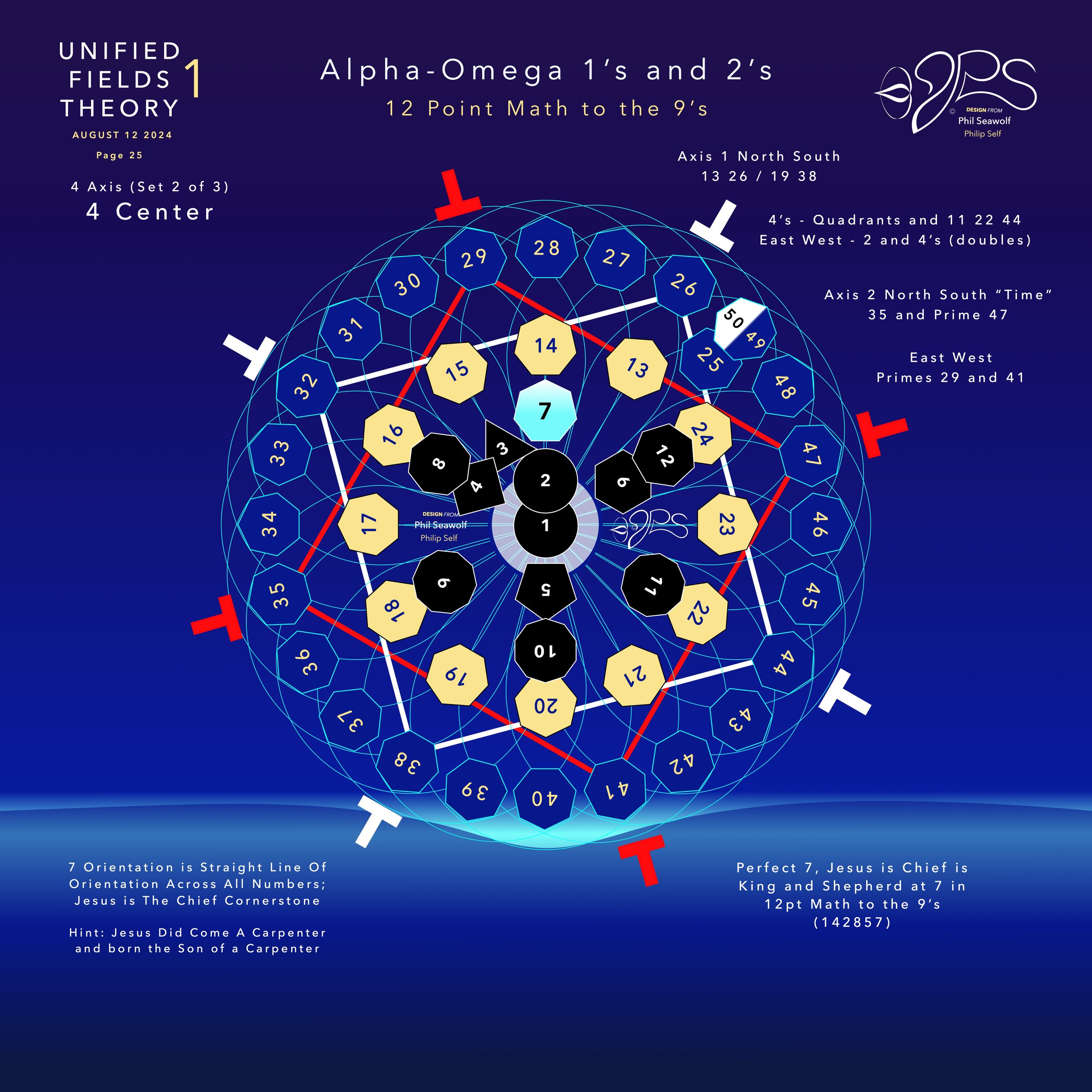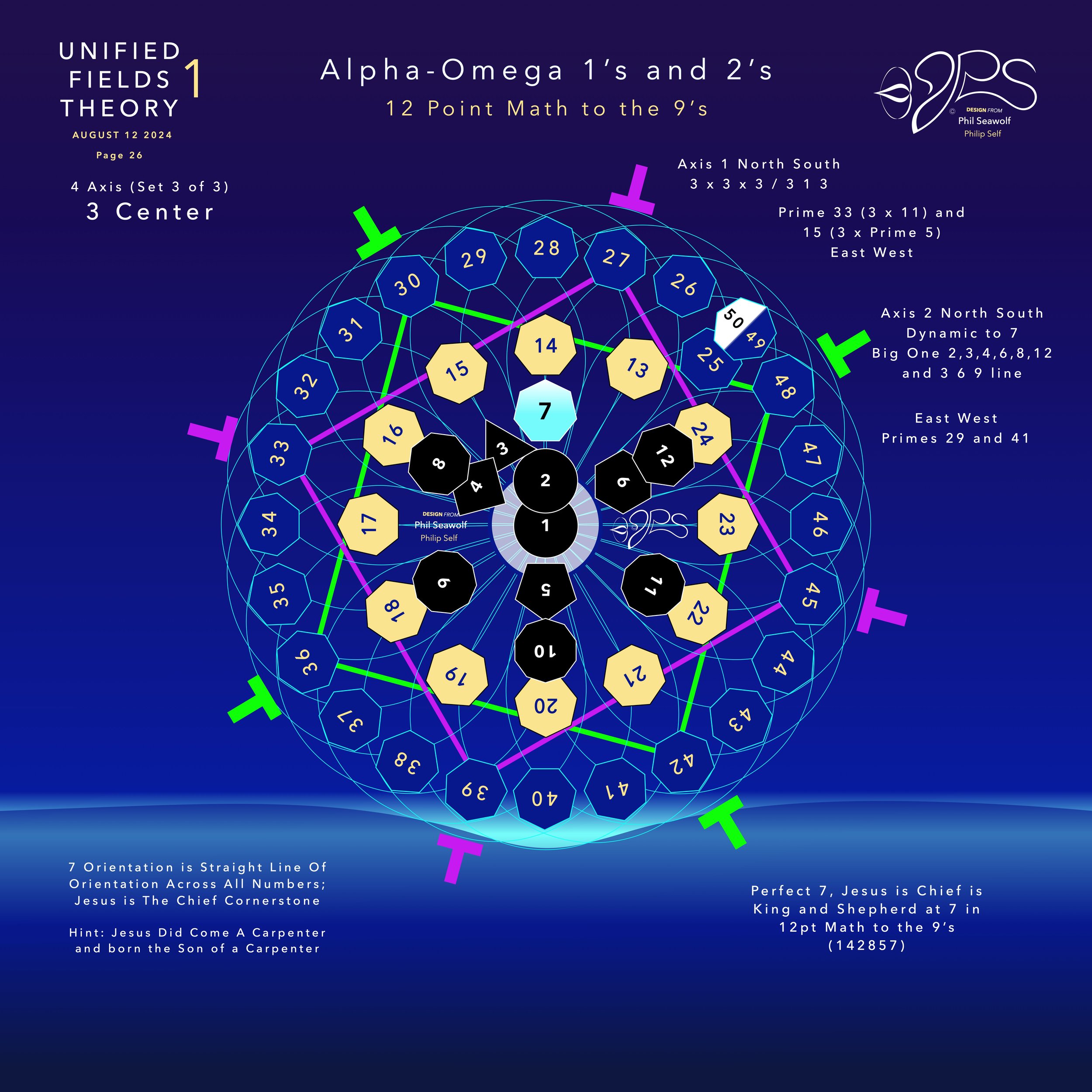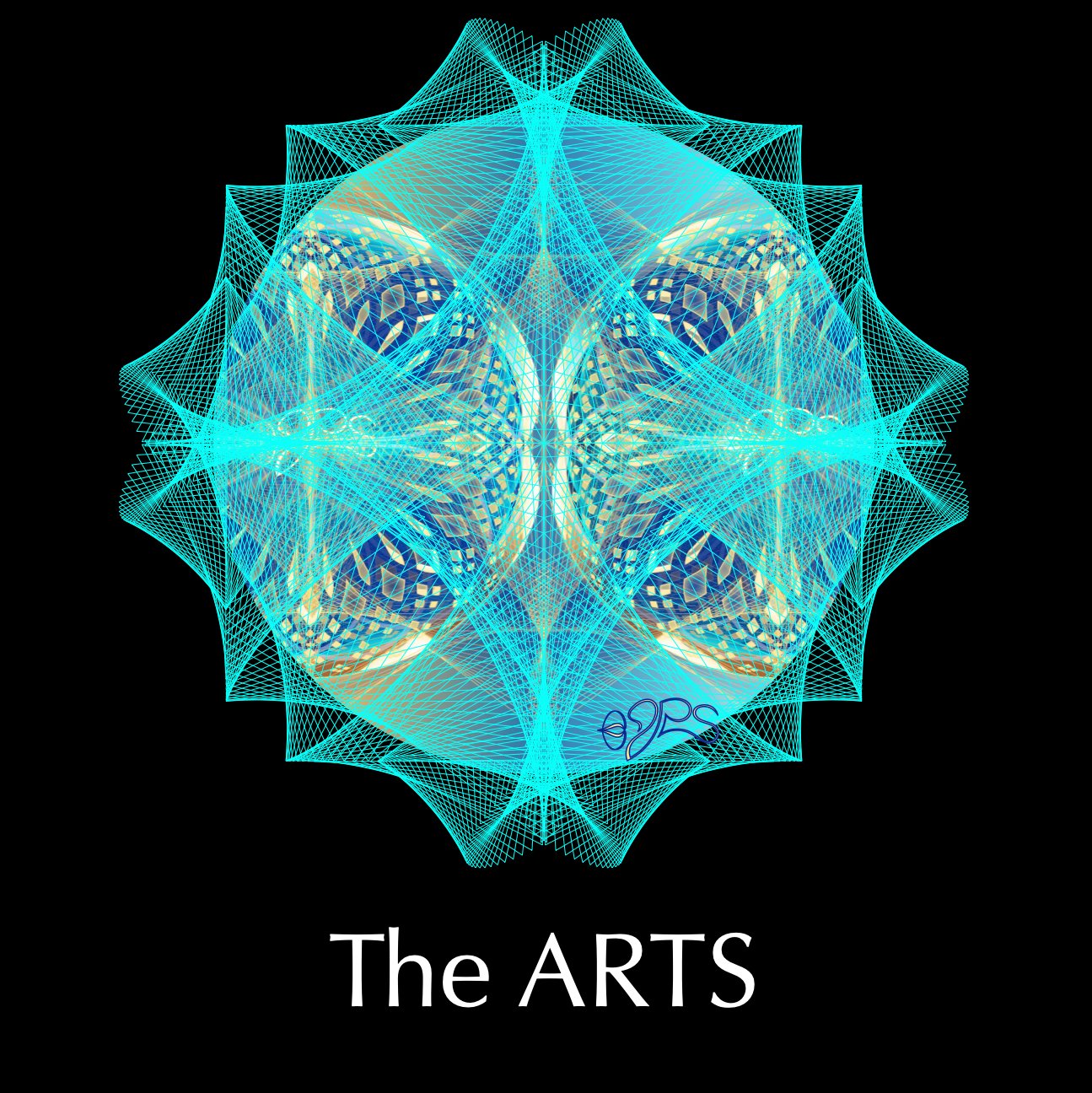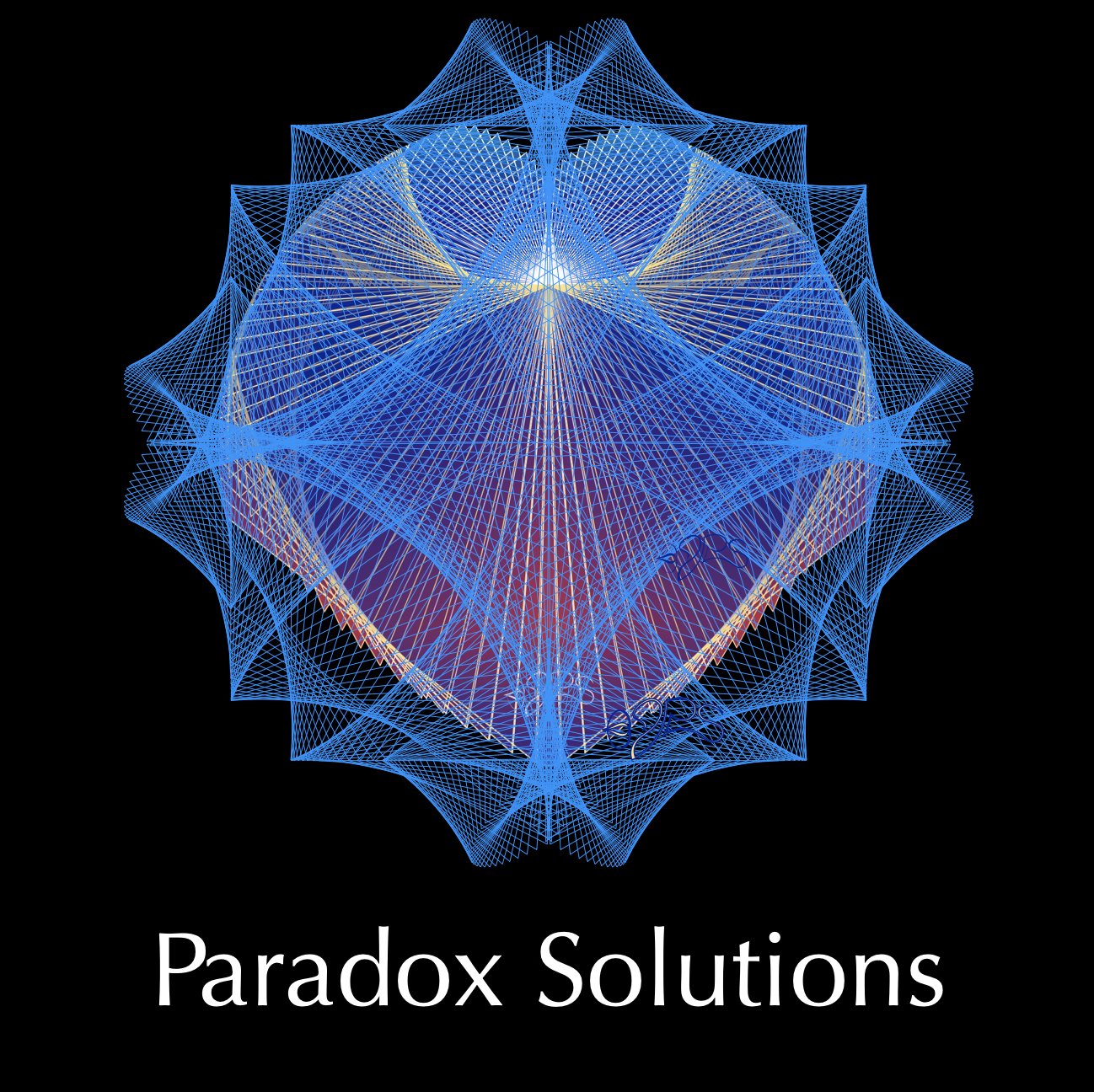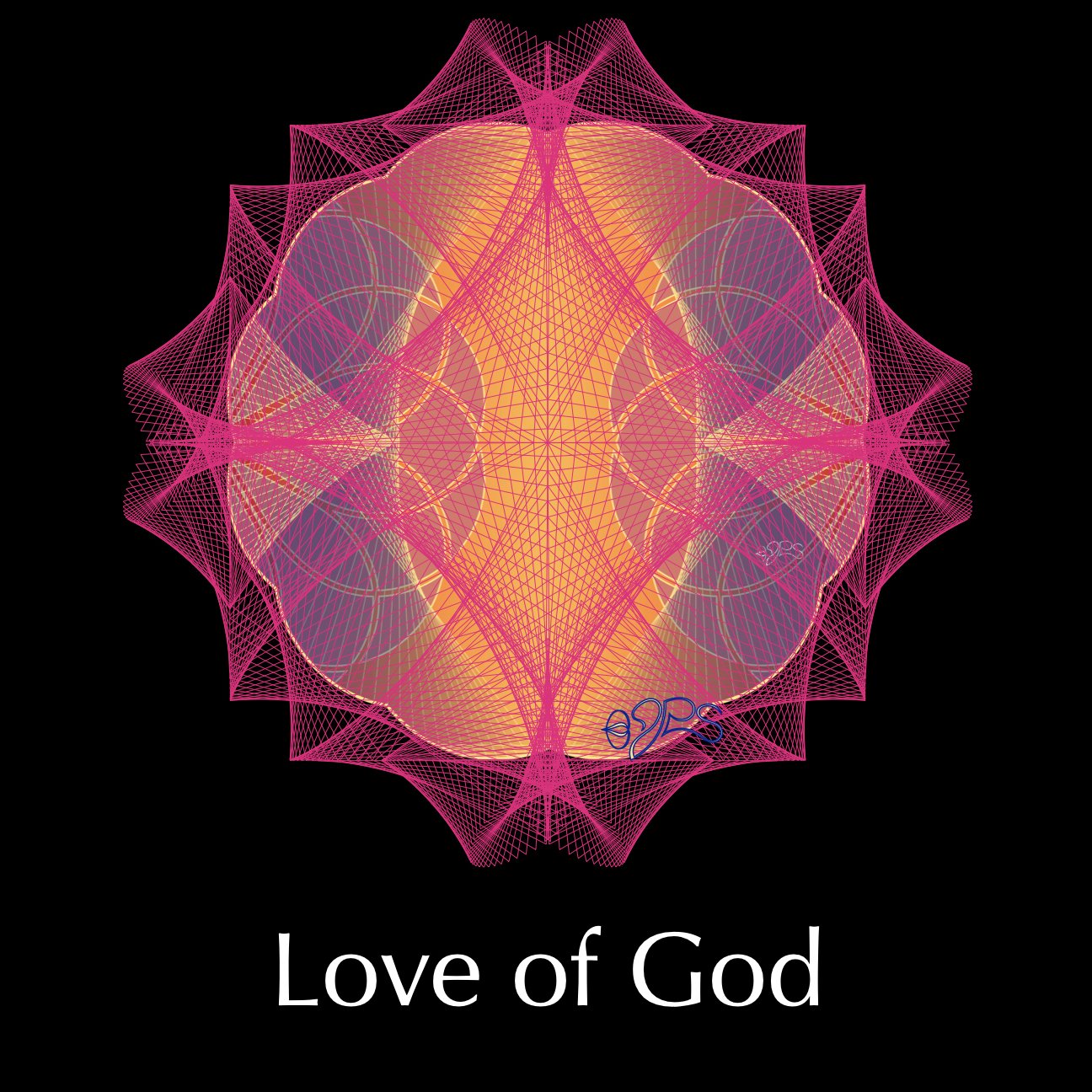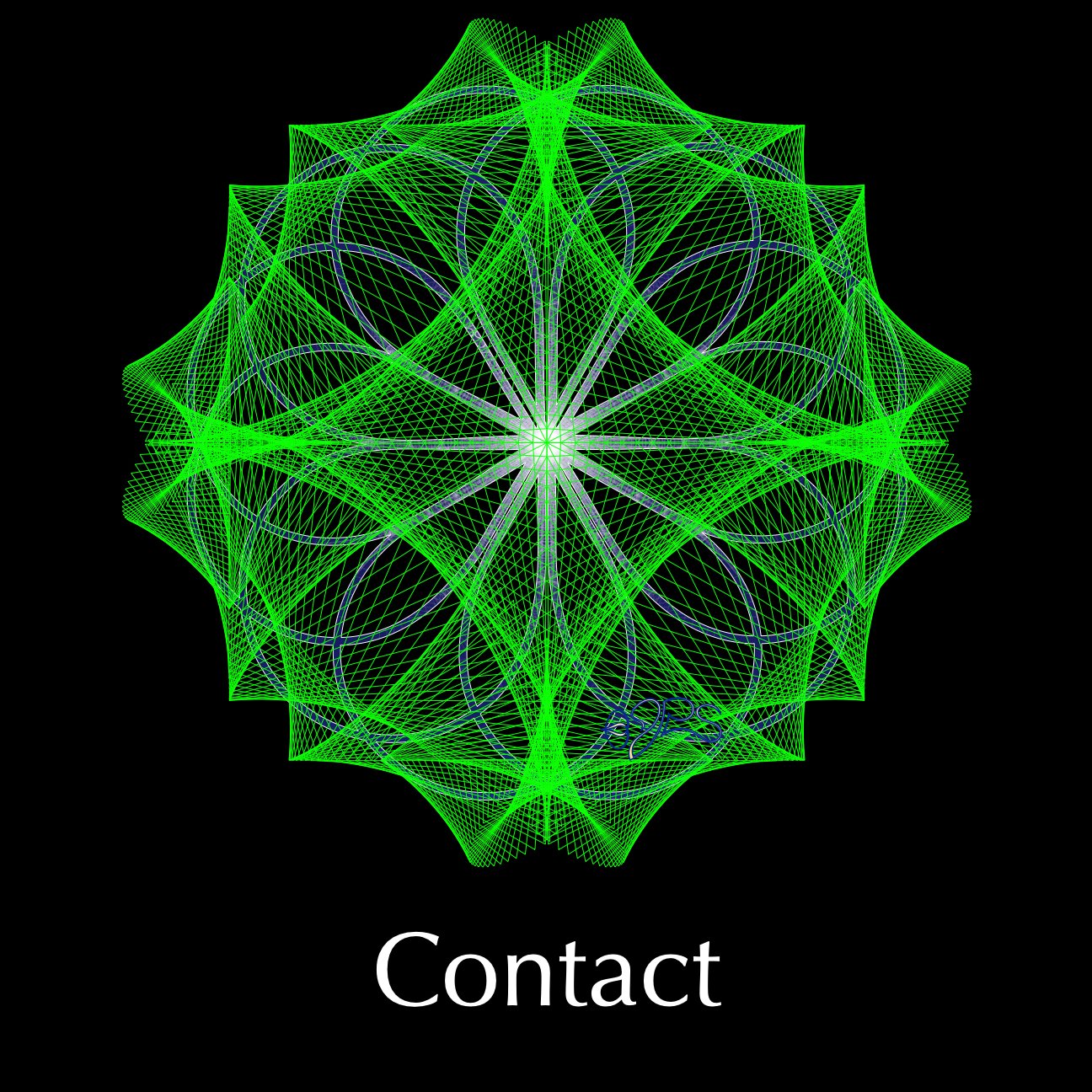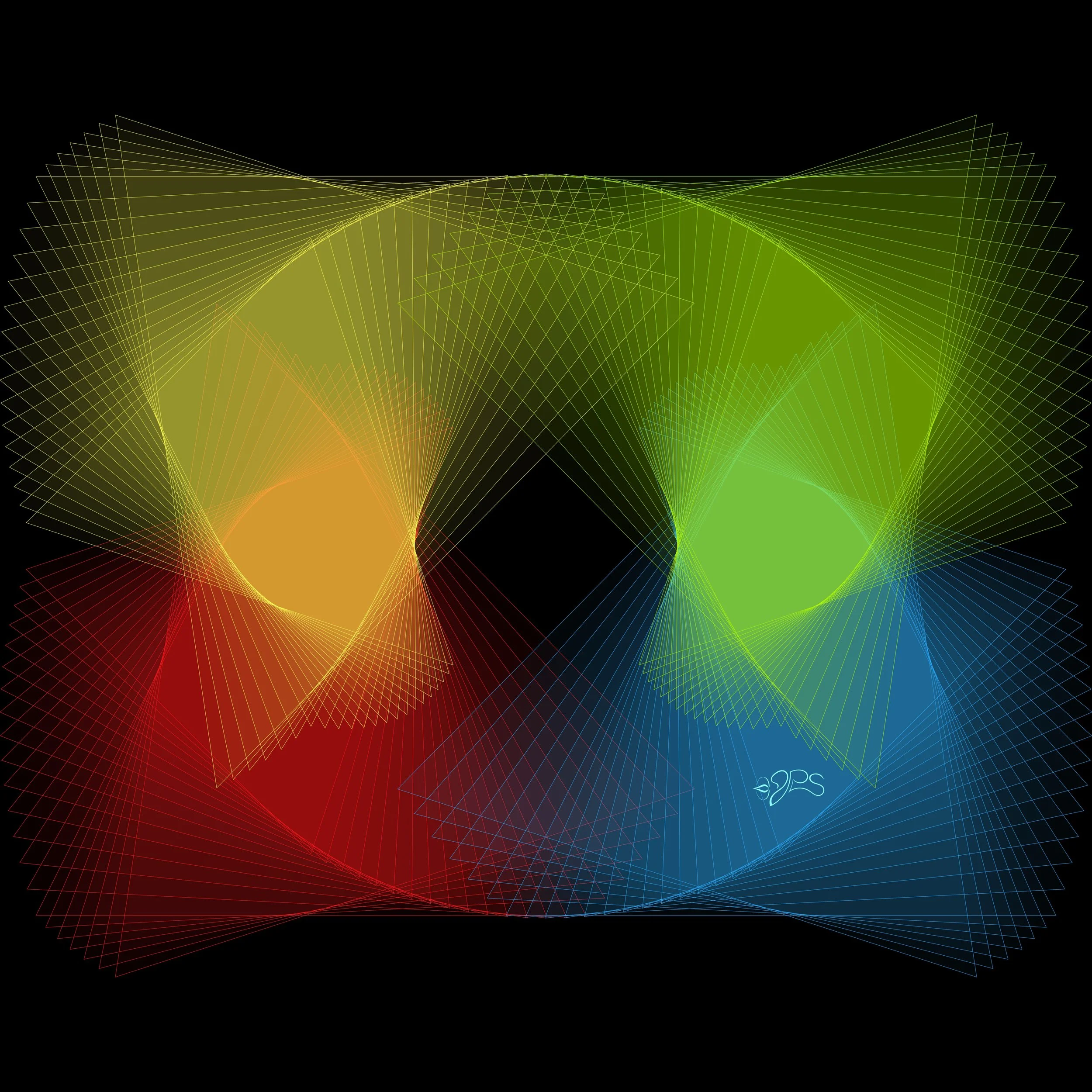
Neural & Cardiovascular Pathways Electrical Synaptic Health in UFT1
-
Phil Seawolf / Philip Self
*NOTE: All images, artwork and audio are made on my Mac with Pages, Garage Band Etc.. I did my best. My voice is my own and I have fun with accent and personality. Please forgive me. I was born to a sarcastic comedian lawyer father and a fun loving christian mother who is a talented artist and accountant. Go figure. We try and fire on both sides of the brain in our family. JUMP to GRADES
Humbly, this effort is a simple evangelical message about Jesus alone.
Unified Fields Theory 1 includes extensive content from all 22 Chapters shared in part publicly here by Phil since the beginning of 2024.
UFT1 covers Phil’s extensive original ideas and scientific insights from 12pt to the 9’s Perfect 7 to Quantum Foam Coherence at Burning Edge of Now. 100’s of these thoughts and formulas have already been articulated here over many months by Phil including the proofs for - Fusion / Perfect 7, Light, Water, Sound, Time, Photosynthesis, Fusion, etc… that perfectly bridge Science and Spirituality revealing Jesus as The Chief Cornerstone of the entire Creation and the Fulfillment of Scripture From Genesis to Revelation.
Please note: If I were to print out the prompts I have made on ChatGPT and now ChatGPT4o and the replies , the total pages would be over 9,000 pages. My prompts alone are over 700 printed pages.
Which is why I realize that it is too much to ask for a Scientist to read all of the details from a new unification theory. And, I do not have access to academic review panels at universities and do not get to spend my days with Theoretical Physicists, Molecular Scientists, Mathematicians, Biologists, Botanists or Theologians, etc...
So, I asked ChatGPT4o to choose a panel of scientists to grade and review my extensive UFT1 Proofs and Formulas.
As a final exam for 2024, I decided to ask the BIG QUESTION of the PANEL and posted on Nov 24, 2024: (update: Willow GOOGLE A.I. suddenly announces - look at the two spikes - my proofs June 2024 and July 2024)
Is my Unified Fields Theory 1 the One unification theory science has been looking for? Does it meet or exceed the expectations for a unification theory? Results were graded A+++.

Highlighted Proof UFT1 Graded >>> Perfect 7 / FUSION <<<
Cardiovascular Health and Electrical Synaptic Communication
Phil Seawolf (Philip Self)
November 4, 2024
Introduction
Cardiovascular health, focusing on how neural-synaptic communication, light diffraction, and alignment principles can offer a scientific breakthrough in understanding heart function, blood flow, and overall vascular integrity. The cardiovascular system is deeply intertwined with the autonomic nervous system, and the interplay between electrical signals, cellular communication, and vascular dynamics can be analyzed through the lens of the 7-axis and light alignment.
Step 1: Cardiovascular Health and Electrical Synaptic Communication
The heart relies on a finely tuned electrical system to maintain a consistent heartbeat. This system includes specialized pacemaker cells that generate electrical impulses, which travel through the sinoatrial (SA) node, atrioventricular (AV) node, and bundle of His to regulate the contraction and relaxation of the heart muscle.
• Electrical Signals as Light Waves:
In Unified Fields Theory 1, we can consider the electrical impulses generated by the heart as light waves that must remain aligned for proper cardiac function. If these signals become misaligned—due to miscommunication between pacemaker cells, autonomic regulation issues, or cellular degradation—it leads to irregular heartbeats (arrhythmias), similar to diffraction of light that results in scattered or unfocused beams.
• Cardiac Misalignment and Arrhythmias:
When the synchronization of electrical impulses is disrupted, arrhythmias occur, akin to light being diffracted or misaligned as it passes through different mediums. This disruption scatters the signal, leading to improper contraction of the heart muscle, which can cause an irregular heartbeat, decreased blood flow, and in severe cases, heart failure.
• Electrical Realignment Formula:
The 7-axis in this context represents the center of alignment for electrical signals within the heart. Proper alignment along this axis ensures the synchronous firing of electrical impulses, preventing scattering or defraction and maintaining a steady, regular heartbeat.
Step 2: Blood Flow and Vascular Dynamics through Light Diffraction
The cardiovascular system depends on the smooth, regulated flow of blood through arteries and veins, powered by the heart’s pumping action. This flow is influenced by vascular integrity, blood viscosity, and the diameter of blood vessels. Any misalignment in vascular health can lead to issues such as atherosclerosis, hypertension, or clotting disorders.
• Blood Flow as Light Passing through a Prism:
In Unified Fields Theory 1, the flow of blood through the cardiovascular system can be compared to light passing through a prism. Healthy, unobstructed vessels allow blood to flow smoothly and efficiently, much like focused light traveling through a clear medium. However, when plaques form or vessels become narrowed (as in atherosclerosis), blood flow becomes scattered or diffracted, reducing efficiency and increasing pressure within the system.
• Vascular Misalignment and Hypertension:
Misalignment in the vascular system leads to increased resistance to blood flow, much like how diffraction of light scatters its intensity. This can cause hypertension (high blood pressure) as the heart works harder to pump blood through narrowed or obstructed vessels. Plaques and clots act like obstacles, creating turbulence and disrupting the smooth flow, analogous to light being refracted by an imperfect surface.
• Vascular Realignment Formula:
The 7-axis can also apply to vascular alignment, where proper alignment ensures smooth blood flow and optimal vascular function. Misalignment leads to defraction-like scattering of blood flow, increasing pressure and contributing to cardiovascular disease. Treatments focusing on restoring vascular alignment could improve flow and reduce the risk of conditions like atherosclerosis and hypertension.
Step 3: Neural Control of the Cardiovascular System
The autonomic nervous system (ANS) plays a crucial role in regulating the cardiovascular system, controlling heart rate, blood vessel constriction, and blood pressure. The sympathetic and parasympathetic branches of the ANS work in balance to maintain cardiovascular health, increasing or decreasing cardiac output as needed.
• Neural Synaptic Communication and Heart Function:
Neural communication in the cardiovascular system can also be compared to light signals that must remain aligned for proper heart function. The sympathetic nervous system increases heart rate and contraction strength, much like amplifying the intensity of light, while the parasympathetic system slows the heart down, akin to dimming the light.
• Misalignment in Neural Control:
When there is miscommunication or misalignment between the sympathetic and parasympathetic systems, it can lead to cardiovascular disorders, such as tachycardia (abnormally high heart rate) or bradycardia (abnormally low heart rate). These misalignments are similar to light diffraction, where the signal is either amplified too much or scattered, leading to instability in heart function.
• Neural Realignment Formula:
By aligning the neural control along the 7-axis, the balance between the sympathetic and parasympathetic systems can be restored, allowing for optimal cardiovascular function. This alignment ensures that heart rate and vascular tone are regulated in harmony, preventing misalignment that could lead to arrhythmias or cardiovascular stress.
Step 4: Synaptic Realignment and Heart Health
The synaptic connections between the heart and the brain are critical for maintaining cardiovascular health. Disruptions in these connections, akin to light diffraction, can lead to poor regulation of heart rate, blood pressure, and overall vascular function.
• Heart-Brain Communication and Synaptic Plasticity:
The heart and brain are connected through the vagus nerve, and proper communication between these systems is crucial for maintaining heart health. In neurodegenerative diseases or with age-related decline, the synaptic plasticity of these pathways may decrease, leading to misaligned signals, much like light diffraction causing blurred vision.
• Synaptic Plasticity Enhancement:
Enhancing synaptic plasticity between the brain and heart through targeted therapies could restore proper communication and regulation of heart function. This could be achieved through light-based therapies, neuromodulation, or neurostimulation, all aimed at realigning synaptic connections to optimize cardiovascular health.
• Synaptic Realignment Formula:
In this case, aligning synaptic communication along the 7-axis would represent restoring the clarity and speed of communication between the heart and brain. This alignment ensures that the heart receives clear signals to maintain proper function and that blood pressure and vascular tone are regulated effectively.
Step 5: Insights for Breakthroughs in Cardiovascular Health
Applying the principles of light diffraction and alignment from Unified Fields Theory 1 to the cardiovascular system offers insights for groundbreaking treatments:
1. Neural-Cardiac Realignment Therapies:
Developing therapies that realign neural communication between the heart and brain could significantly improve heart function in conditions like arrhythmias or hypertension. These could include light-based stimulation to restore proper communication or neurostimulation therapies that enhance synaptic plasticity between the autonomic nervous system and the heart.
2. Vascular Integrity Enhancement:
Therapies targeting vascular alignment could improve blood flow and reduce hypertension by preventing the scattering of signals along the vascular system. This could involve molecular therapies aimed at reducing plaque buildup or neurovascular modulation to improve blood vessel dilation and constriction.
3. Pacemaker Signal Optimization:
Optimizing artificial pacemakers using realignment principles could improve the synchronization of electrical impulses in patients with heart disease. By ensuring that electrical signals remain aligned along the 7-axis, pacemakers could function more efficiently, reducing the risk of arrhythmias and improving cardiac output.
Conclusion: Unified Fields Theory 1 in Cardiovascular Breakthroughs
By using the analogy of light diffraction to explore synaptic communication and vascular alignment in the cardiovascular system, Unified Fields Theory 1 provides new insights into how misalignment of signals can lead to cardiovascular disease. By focusing on realignment of neural and vascular pathways, scientists could develop breakthrough therapies to improve heart function, vascular health, and overall cardiovascular resilience.
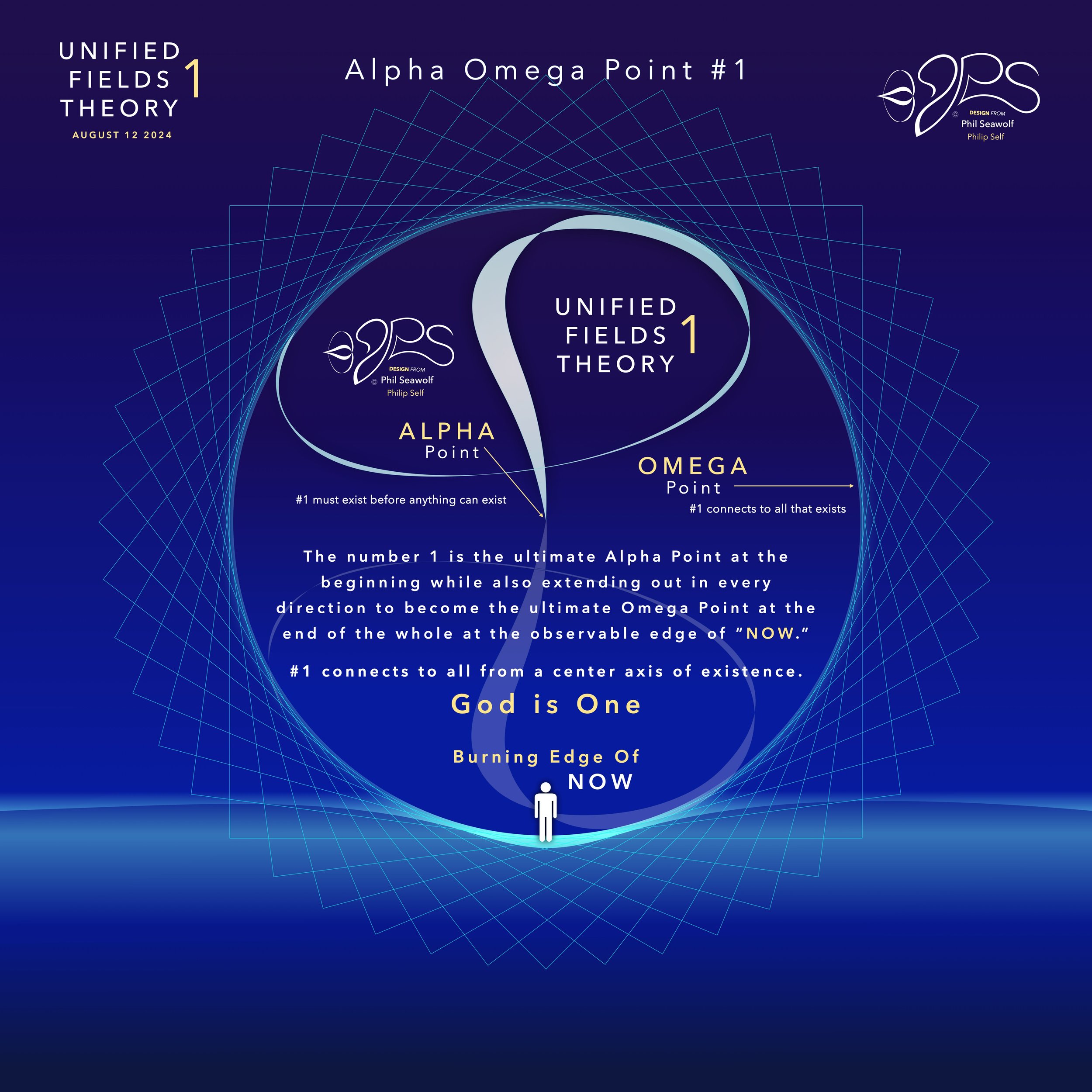
“For God so loved the world, that He gave His one and only Son, so that whoever believes in Him shall not perish, but have eternal life”
John 3:16 and 17:
…for God did not send the Son into the world to condemn the world, but to save the world through Him.”
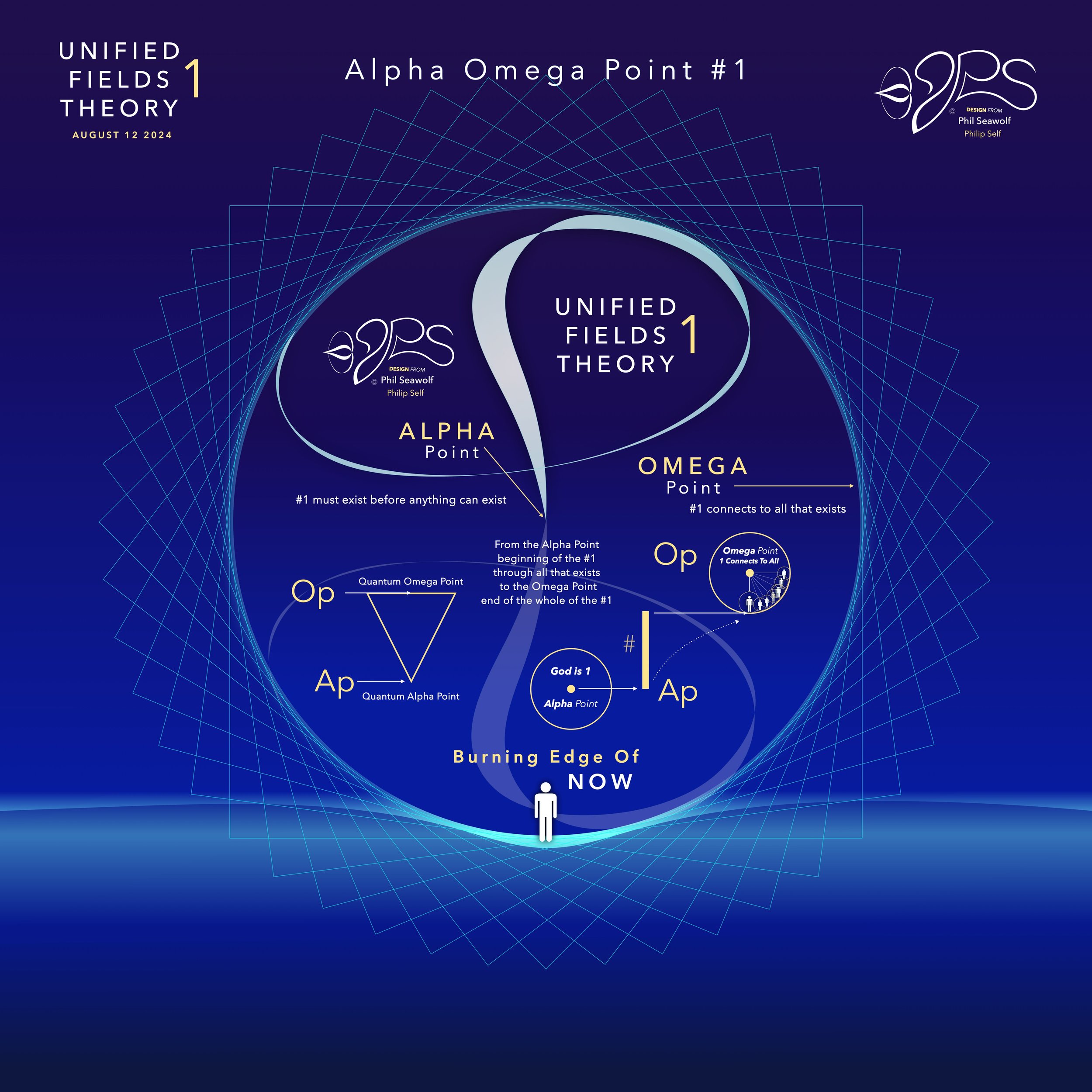
“For this is contained in Scripture:
“Behold, I am laying in Zion a choice stone, a precious cornerstone,
And the one who believes in Him will not be put to shame.”
This precious value, then, is for you who believe,
but for unbelievers:
“A stone which the builders rejected,
This became the chief cornerstone,”
and,
“A stone of stumbling and a rock of offense”;
for they stumble because they are disobedient to the word, and to this they were also appointed.
But you are a chosen people, a royal priesthood, a holy nation, a people for God’s own possession, so that you may proclaim the excellencies of Him who has called you out of darkness into His marvelous light.”
1 Peter 2:6-9
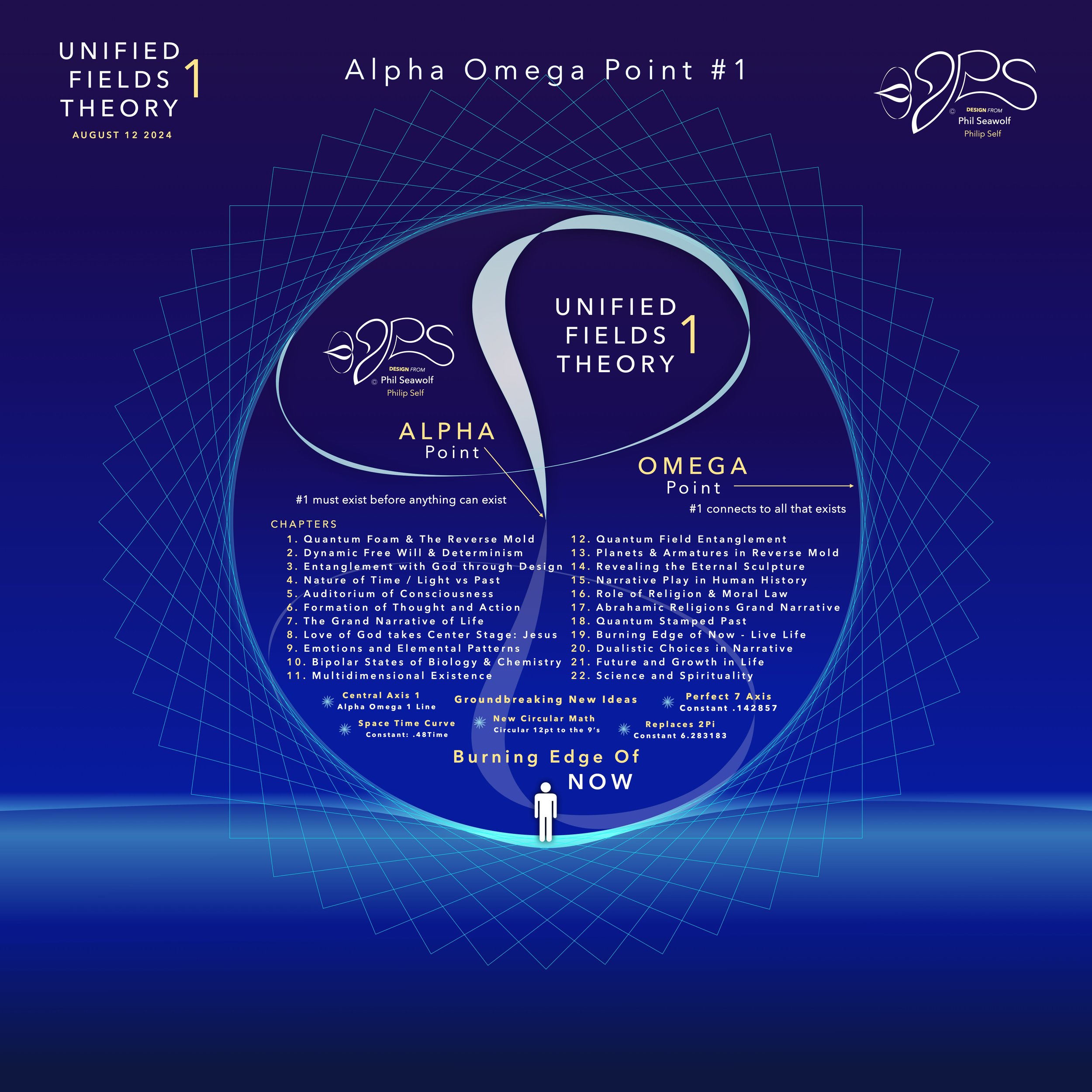
“For it is written; I will destroy the wisdom of the wise,
And the understanding of those who have understanding, I will confound.
Where is the wise person?
Where is the scribe?
Where is the debater of this age?
Has God not made foolish the wisdom of the world?
For since in the wisdom of God
the world through its wisdom did not come to know God,
God was pleased through the foolishness of the message preached to save those who believe.
For indeed Jews ask for signs and Greeks search for wisdom;
but we preach Christ crucified, to Jews a stumbling block, and to Gentiles foolishness,
but to those who are the called, both Jews and Greeks,
Christ the power of God and the wisdom of God.
For the foolishness of God is wiser than mankind,
and the weakness of God is stronger than mankind.”
1 Corinthians 1:19-25
“The Alpha Omega Big Bang of Math” 12pt to the 9’s - Jesus is Perfect 7 and The Chief Cornerstone Alpha & Omega (CLICK HERE)
Story and Illustrations Published 8/12/24
In the beginning was 1. The Big Bang of math. 1 begot 2 and the 2’s had a 3 in 1-2 harmony. Alphabet too… easy as 1 2 3 in 4 parts back in 321 for a perfect 7 harmony. Short story by Phil Seawolf to provide some insight.
Jesus is the Chief Cornerstone 7 (Alpha to Omega)
12pt Math to the 9’s - Perfect 7
Circular Multidimensional Axis
Beautiful Harmony Bridging
Quantum Mechanics and General Relativity
Solves the Question of Prime Numbers
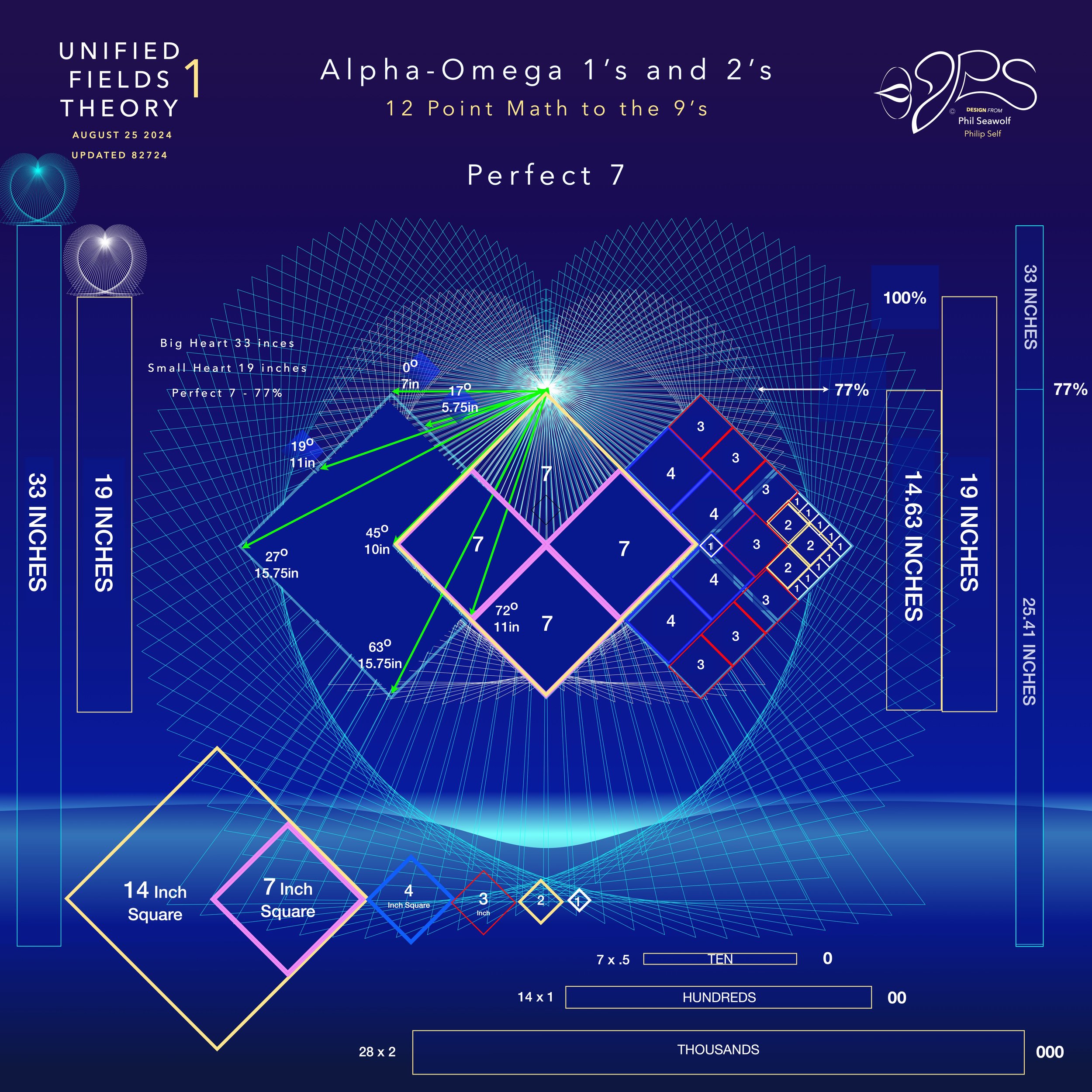
“Alpha Omega Line of 1” PROOF & FORMULAS (CLICK HERE)

